Brown Theatre
Introduction
Text-to-speech Audio
Images
Brown Theatre construction site, Louisville, Kentucky, 1925. ULPA CS 062144, Caufield & Shook Collection, Photographic Archives, University of Louisville, Louisville, Kentucky, http://digital.library.louisville.edu/cdm/ref/collection/cs/id/1336.
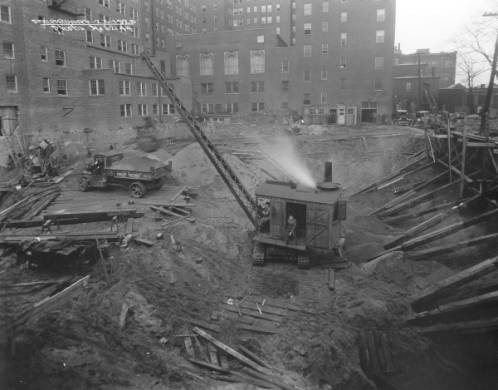
View down Broadway looking west between Third Street and Fourth Street, Louisville, Kentucky. The Brown Theatre can be seen on the right. ULPA R 50636, Royal Photo Company Collection, 1982.03, Photographic Archives, University of Louisville, Louisvil
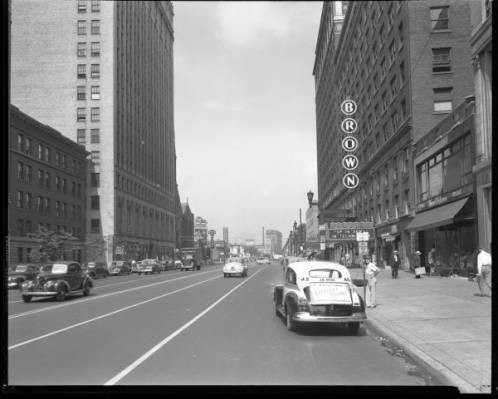
Brown Hotel and Theatre, Louisville, Kentucky, night scene, 1925. The lit marquee includes the theater's first performance. ULPA CS 067722, Caufield & Shook Collection, Photographic Archives, University of Louisville, Louisville, Kentucky, http://dig
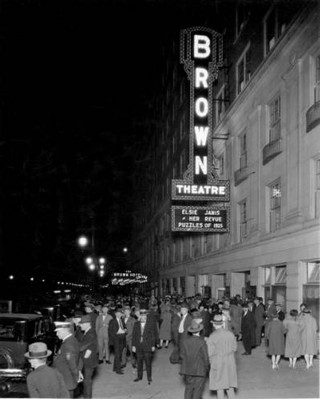
Current facade. "brown-theatre-history.jpg," The Kentucky Center, accessed on May 17, 2017, https://www.kentuckycenter.org/plan-your-visit/brown-theatre.
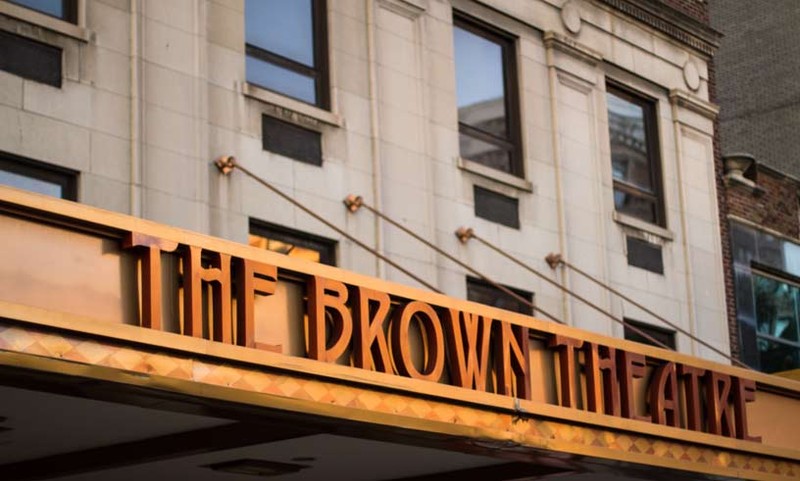
Small article from local newspaper regarding the December 25, 1959 protest. "Negro Group is Picketing Movie House: Brown Turned Away 15 from 'Porgy, Bess,'" The Courier-Journal (Louisville, KY), Dec. 26, 1959.
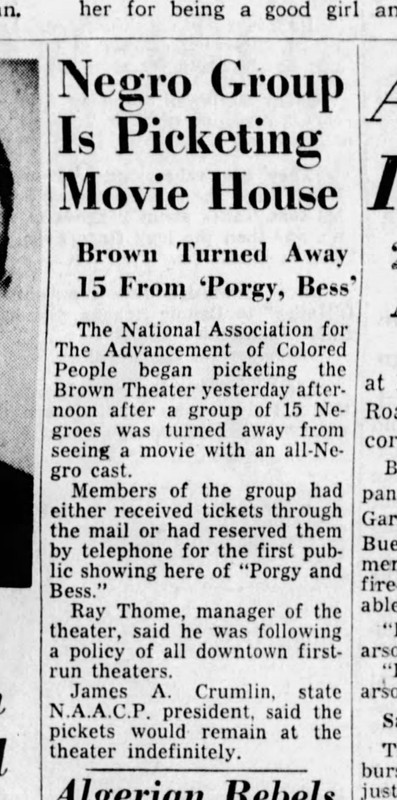
Backstory and Context
Text-to-speech Audio
Throughout the 1950s, the majority of Louisville's white-owned establishments located outside of the African American community either completely excluded African Americans or treated them significantly differently. Overall, the city was deeply and structurally segregated, and sit-ins began in downtown Louisville in 1956. Although the Brown Theatre had relaxed its policy to admit African American school children for the performance of the Ten Commandments, management did not permanently change its policies. Members of the NAACP Youth Council specifically protested the Brown Theatre on December 25, 1959, when the theater refused admittance to fifteen ticket-holding African Americans. The ticket-holders had received the tickets through the mail or reserved them by telephone for the theater's first public showing of "Porgy and Bess," an all African American cast. In response to why the theater turned away the African Americans, management cited the policy of all downtown first-run theaters. Demonstrations continued at the Brown Theatre until 1963, when a public accommodations ordinance was passed and the theater opened its doors to African Americans. (For more information on Louisville's civil rights movement, see link in the "Additional Information" section.)
Theater renovations began in 1962 to return live performances to the theater, and a second renovation occurred in 1971. Following the 1971 renovation, the Louisville Board of Education purchased the theater thereafter and contracted it to the Louisville Theatrical Association. At this time, also, the theater was rechristened The Macauley Theatre. The original Macauley Theatre operated from 1873 to 1925--when the property was sold to the Starks Brothers and raized--and was located at 329 W. Walnut (now Muhammad Ali) Street.
The Broadway-Brown Partnership formed in 1982 and purchased the theater and adjoining Brown Hotel to rejuvenate Louisville's southern end business district. In 1997, the Fund for the Arts--the nation's oldest united arts fund--acquired the theater and continued a $4.2 million restoration. The Fund for the Arts contracted the Kentucky Center to manage the theater, which continues to this day. After generous gifts from the W. L. Lyons Brown Foundation, the Brown family, and the Brown-Forman Corporation, the theater is re-rechristened W. L. Lyons Brown Theatre (1998). A 1998 gift from Owsley Brown Frazier leads to the main reception area being named the Frazier Lobby.
Sources
"Louisville Downtown Sit-In Demonstrations," University of Louisville and Louisville Metro Council, Louisville Downtown Partnership, accessed on May 15, 2017, https://louisville.edu/artsandsciences/idop/outreach-programs/civil-rights-markers-project/downtownC...
"Macauley's Theatre Collection," University of Louisville Libraries, accessed on May 15, 2017, http://digital.library.louisville.edu/cdm/description/collection/macauley/.
